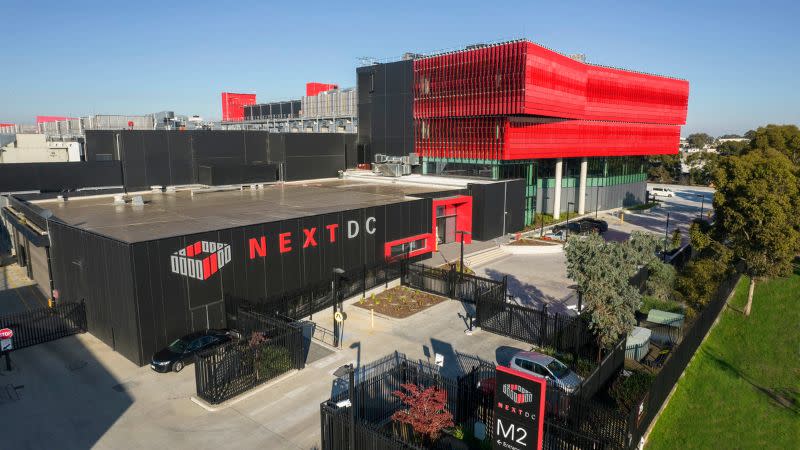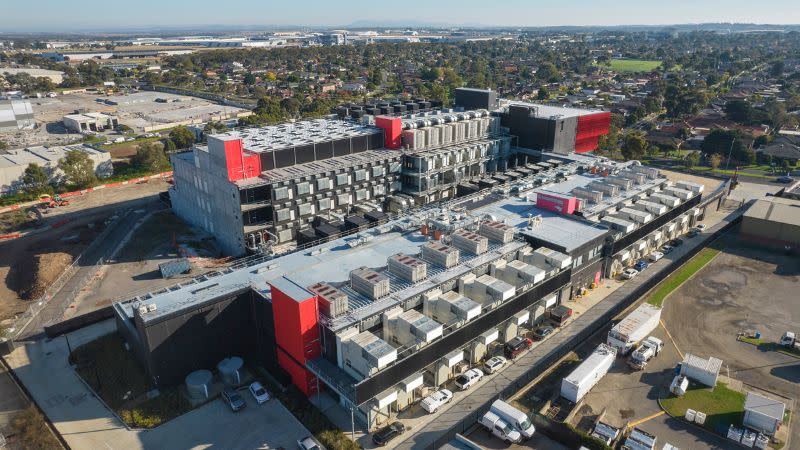Data Campuses Evolve into Connected Communities

The next frontier of urban development isn’t housing or retail—it’s data.
Australia’s mission critical sector is evolving from single-use infrastructure into connected precincts that integrate with their surroundings and support broader civic outcomes.
Once isolated on the fringes of cities, data centres are now becoming a central part of them.
With the nation’s data centre capacity expected to more than double by 2030, supported by more than $26 billion in new investment,* mission critical buildings are reshaping the relationship between digital infrastructure and urban growth.
Sustainability has also become a defining factor in how the sector expands, influencing where facilities are located, how they’re designed and how they source energy.
Operators now rank among the world’s largest buyers of renewable energy, with major providers from across the globe committing to 100 per cent renewables by 2030.*
Rethinking data centres as high value commercial assets
As the data centre market matures, these facilities are being recognised not just as critical infrastructure but as high-value commercial assets.
Adaptive, future-proofed design is a key lever of investment performance within diversified property portfolios.
For more than a decade, Luke Bonham (pictured top), associate director at VIA Architects (VIA), has worked at the forefront of mission critical design, leading projects that reflect the sector’s rapid evolution.
“Data centres are no longer treated as siloed utilities,” Bonham said.
“They’re being valued alongside logistics and retail assets and that shifts the focus to how design enables adaptability to deliver both performance and returns.”
The role of design in shaping next-gen data environments
VIA’s mission critical portfolio spans some of Australia’s most advanced facilities, among them NEXTDC’s M2 Melbourne campus in Tullamarine—a cornerstone of the city’s digital transformation.
While the masterplanning, concept and spatial design were led by NEXTDC’s internal Engineering and Design team with client-side consultants, VIA was engaged by NEXTDC, in partnership with Kapitol Group, to oversee construction detailing and delivery.
This collaboration ensured continuity and design excellence from concept to completion.

“The facilities that remain competitive are those designed for long-term relevance,” Bonham said.
“When architecture allows for seamless technical upgrades and more efficient use of space and energy, it delivers enduring value economically, operationally and environmentally.”
Since 2018, VIA has been involved in the design delivery of complete stage base build and fitouts, hyperscaler customer data hall fitouts, power infrastructure and redundancy upgrades and customer office facilities, each designed and delivered within a live operational environment.
The studio’s latest appointment to Stages 9–11 of the campus will add 11 new data halls across a total gross building area of 47,300 sqm, supporting the facility’s expansion.
The new stages include a modular rooftop plant system designed for rapid deployment, as well as customer experience offices and key support amenities.
Delivered alongside Kapitol Group under an accelerated 18-month construction program, the works reflect how continuity in design and delivery enhances both adaptability and performance, as Melbourne’s need for digital infrastructure intensifies.
From technical performance to precinct-scale design
Around the world, mission critical infrastructure is expanding beyond its original purpose.
In Europe, campuses are being developed as self-sufficient mini-cities, powered by embedded energy systems and planned for modular growth. In the US, data centres are increasingly being delivered alongside major research and innovation precincts, aligning digital infrastructure with centres of technological advancement and public use.
“Australia is following suit,” Bonham said.
“At VIA, we’re exploring concepts for billion-dollar facilities alongside forward-thinking operators, designing broadacre precincts that generate and manage their own power and leverage natural resources.”

This move towards energy self-sufficiency is transforming how facilities are designed.
Mission critical environments are now being planned with renewable energy generation, heat recovery and advanced water-cooling systems that reduce carbon outputs and increase operational independence.
VIA continues to seek new ways to enhance environmental performance across data centre design.
The studio’s collaborations with sustainable technology innovators exemplify this approach, delivering active façade systems that enable facilities to generate renewable solar energy to create a self-sustaining building envelope.
As these trends continue advancing locally, the focus is shifting from pure technical need to the broader question of how data infrastructure interacts with energy systems, cities and communities.
Embedding data centres into the existing urban fabric
As data centres become more visible within metropolitan areas, architecture is emerging as the bridge between digital infrastructure, people and place.
VIA’s ongoing work across hyperscale campuses, adaptive reuse and mixed-use precincts reflects this shift.
Each project contributes to a broader vision, where mission critical architecture supports communities as much as the infrastructure that powers them.
“By taking a precinct-first approach, data centres can deliver public amenity, generate employment and strengthen the social and economic fabric of their surroundings,” Bonham said.
“In doing so, they create value for investors, tenants and communities alike.”
*Manadala Empowering Australia’s Digital Future report, October 2024
The Urban Developer is proud to partner with VIA Architects to deliver this article to you. In doing so, we can continue to publish our daily news, information, insights and opinion to you, our valued readers.















